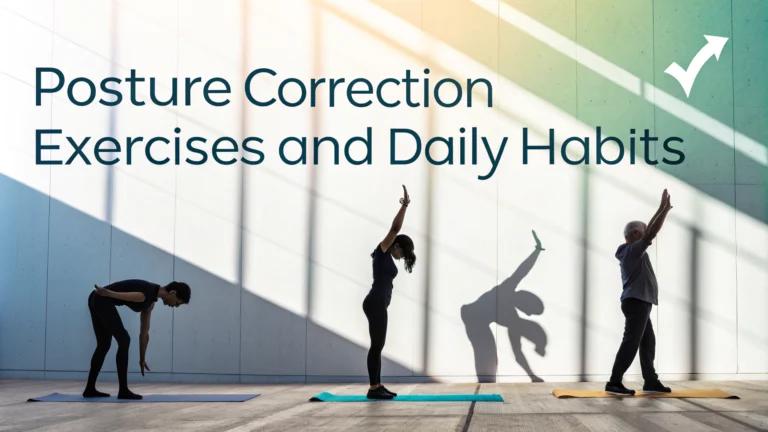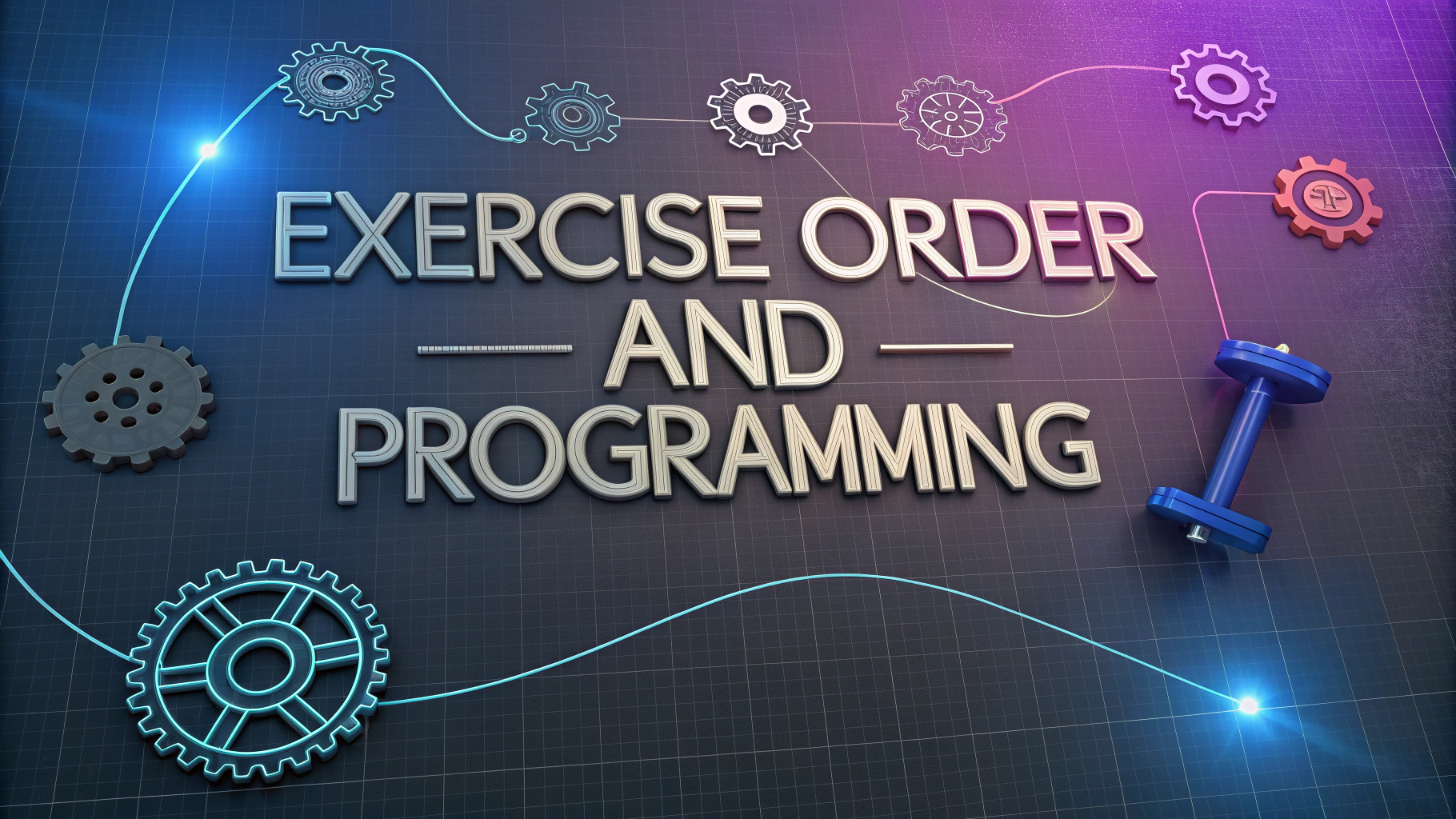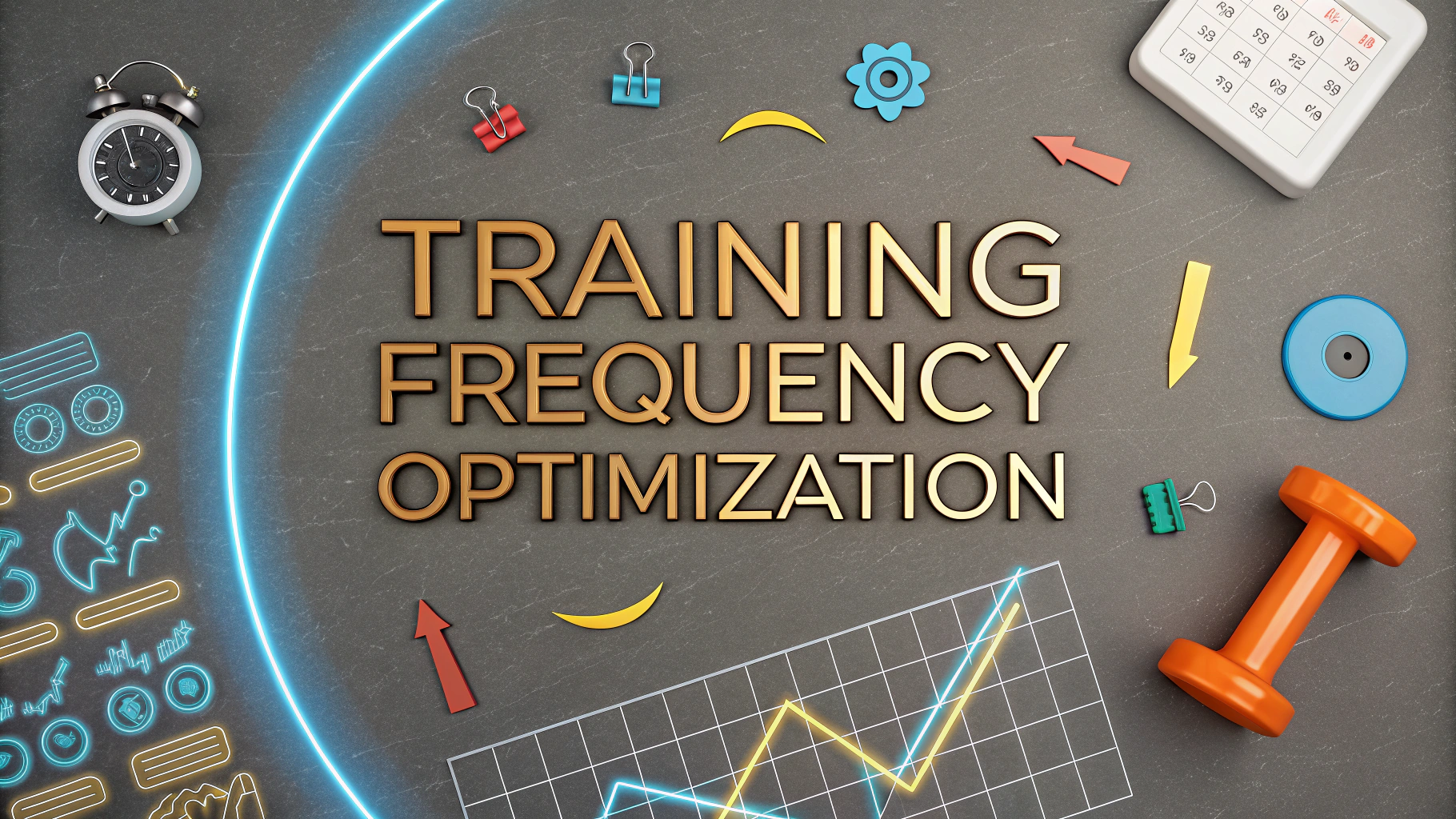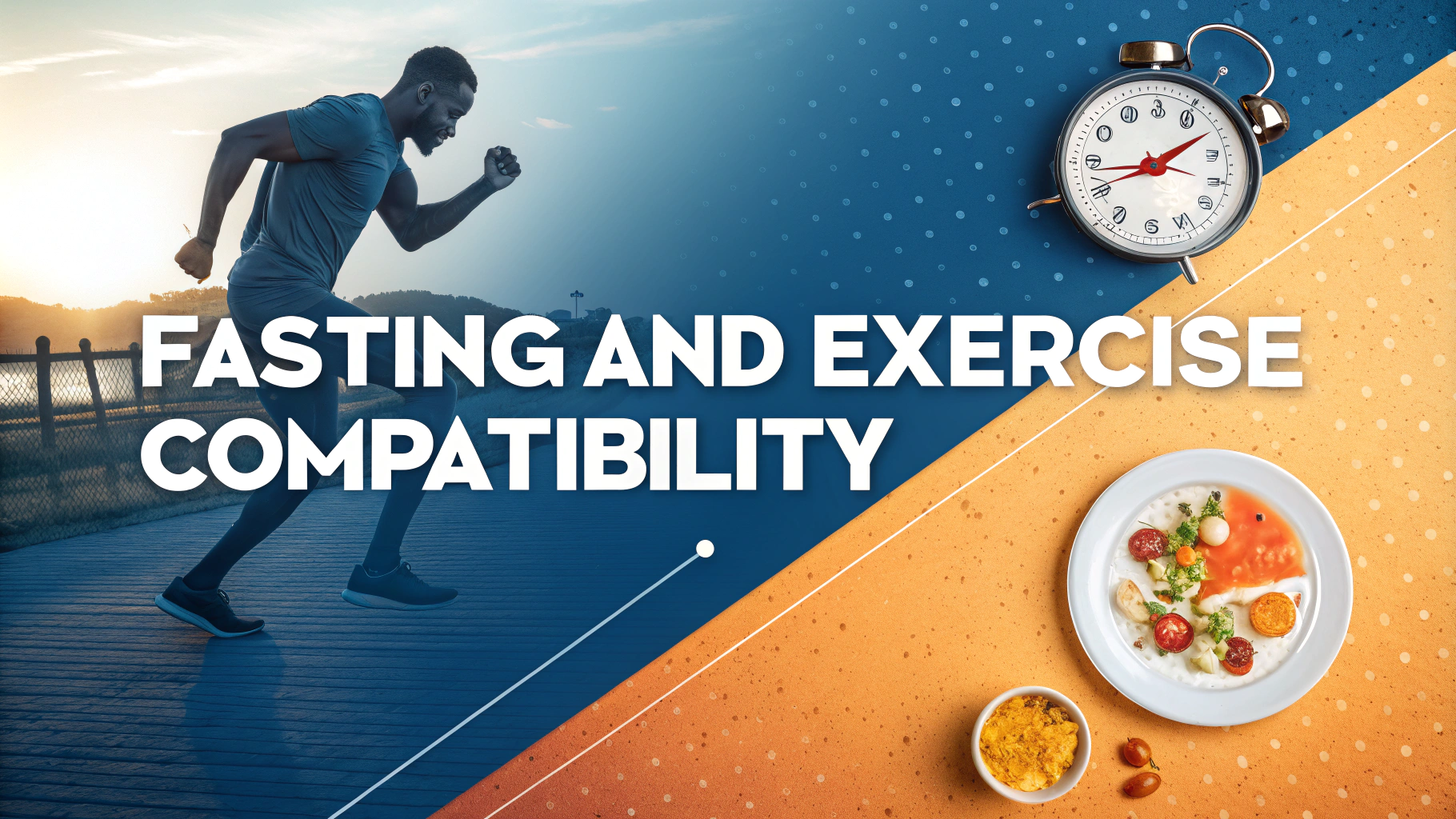Poor posture affects millions of people, leading to back pain, neck strain, and reduced mobility.
This guide outlines practical exercises and daily habits to improve your posture and prevent related health issues.
Quick Posture Check
Stand against a wall with your heels, buttocks, shoulders, and head touching it – if you can’t maintain this position comfortably, you likely need posture correction.
Common Posture Problems
- Forward head posture (tech neck)
- Rounded shoulders
- Anterior pelvic tilt
- Slouching while sitting
Essential Exercises for Better Posture
Wall Angels
Stand against a wall and slide your arms up and down while maintaining contact with the wall – perform 3 sets of 10 repetitions daily.
Cat-Cow Stretch
Get on your hands and knees, alternating between arching and rounding your back – do this for 1-2 minutes each morning.
Chin Tucks
Pull your chin straight back while keeping your head level – hold for 5 seconds, repeat 10 times.
Daily Habits for Better Posture
- Set up an ergonomic workspace with screen at eye level
- Take regular breaks – stand up every 30 minutes
- Sleep on a supportive mattress with proper pillow height
- Maintain awareness of your posture throughout the day
Recommended Products
- Posture corrector brace (various options available on Amazon)
- Ergonomic office chair with lumbar support
- Standing desk converter
- Memory foam pillow for proper neck alignment
When to Seek Professional Help
Contact a physical therapist or chiropractor if you experience persistent pain or discomfort despite following these guidelines.
| Activity | Duration | Frequency |
|---|---|---|
| Posture exercises | 10-15 minutes | Daily |
| Movement breaks | 2-3 minutes | Every 30 minutes |
| Stretching routine | 5-10 minutes | 2-3 times daily |
Track your progress by taking monthly photos or recording measurements of your posture alignment.
Additional Resources
- American Physical Therapy Association: www.apta.org
- National Institute of Health – Back Pain: www.nih.gov
Lifestyle Adjustments
Incorporate movement into your daily routine by taking stairs instead of elevators and walking during phone calls. Choose supportive footwear and avoid prolonged periods in high heels.
Posture During Activities
- Driving: Adjust seat to maintain straight back, keep shoulders relaxed
- Sleeping: Use side-lying position with pillow between knees
- Lifting: Bend at knees, keep objects close to body
- Phone use: Hold device at eye level, avoid neck flexion
Advanced Exercises
Core Strengthening
Perform planks, bridges, and bird-dogs to build core stability – essential for maintaining proper posture throughout the day.
Upper Back Strengthening
Include rows, reverse flyes, and band pull-aparts to combat rounded shoulders and forward head posture.
Measuring Progress
- Take weekly posture photos from side view
- Monitor pain levels and mobility
- Track duration of maintaining proper posture
- Record exercise consistency
Conclusion
Improving posture requires consistent effort and awareness. Combine targeted exercises with proper ergonomics and daily habits for long-term results. Monitor progress regularly and adjust strategies as needed. For persistent issues, seek professional guidance to develop a personalized correction plan.
Remember that posture improvement is a gradual process – maintain patience and consistency with your chosen interventions.
FAQs
- What are the most common causes of poor posture?
Poor posture commonly results from prolonged sitting, excessive smartphone use, weak core muscles, carrying heavy bags improperly, sleeping positions, obesity, and wearing inappropriate footwear. - How long does it take to correct poor posture through exercises?
With consistent practice of posture-correcting exercises and maintaining proper form, noticeable improvements can be seen in 2-4 weeks, though significant changes typically take 3-6 months. - What are the best exercises for improving posture?
Key exercises include wall stands, shoulder blade squeezes, chin tucks, bridges, planks, cat-cow stretches, and thoracic spine extensions. - Can poor posture cause long-term health issues?
Yes, poor posture can lead to chronic back pain, neck strain, headaches, decreased lung capacity, poor digestion, and temporomandibular joint (TMJ) problems. - Should I use a posture corrector device?
Posture correctors can be helpful as temporary reminders, but shouldn’t be relied upon long-term as they can weaken muscles. Focus instead on strengthening exercises and maintaining awareness. - What is the correct sitting posture for desk work?
Feet flat on floor, knees at 90 degrees, back straight against chair, monitor at eye level, shoulders relaxed, and arms parallel to floor when typing. - How does sleeping position affect posture?
Sleeping on your back with a supportive pillow and neutral spine alignment is optimal. Side sleeping with proper pillow height is acceptable, while stomach sleeping can strain neck and spine. - What role does core strength play in posture?
Core muscles are crucial for maintaining proper posture as they support the spine and help distribute body weight evenly. Weak core muscles often lead to slouching and poor alignment. - Can nutrition affect posture?
Yes, adequate calcium, vitamin D, and magnesium are essential for bone health and muscle function. Maintaining a healthy weight also reduces strain on the spine and improves posture. - How often should I take breaks when sitting for long periods?
Take a brief standing or walking break every 30-60 minutes. Practice stretching and movement exercises during these breaks to prevent muscle tightness and maintain good posture.







